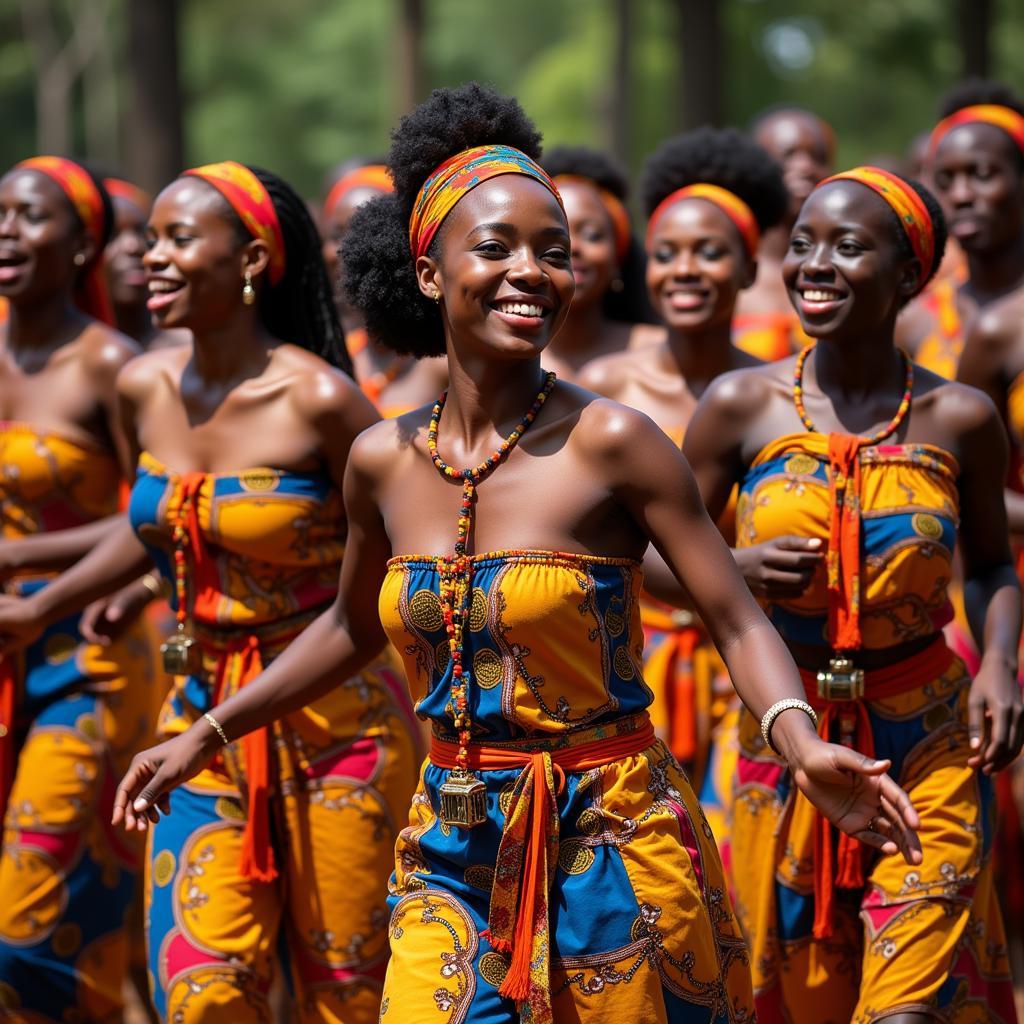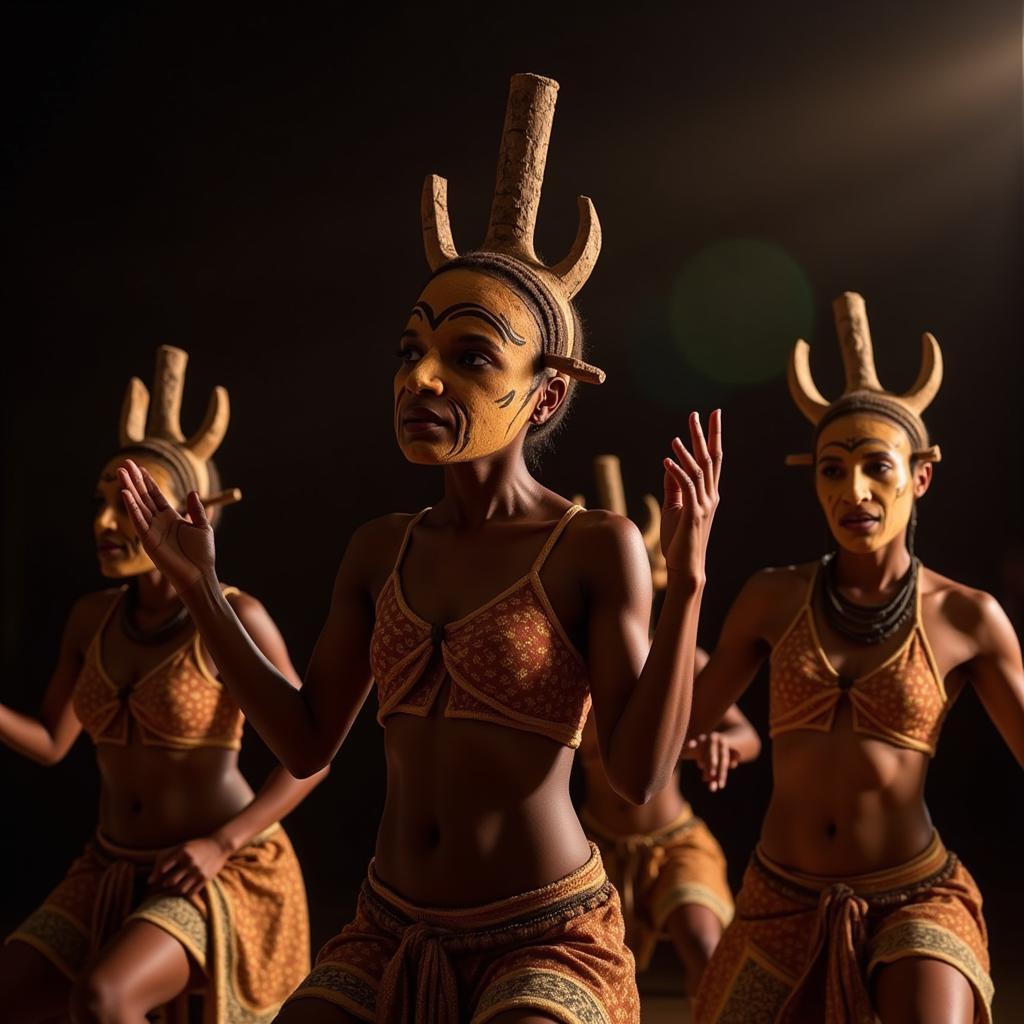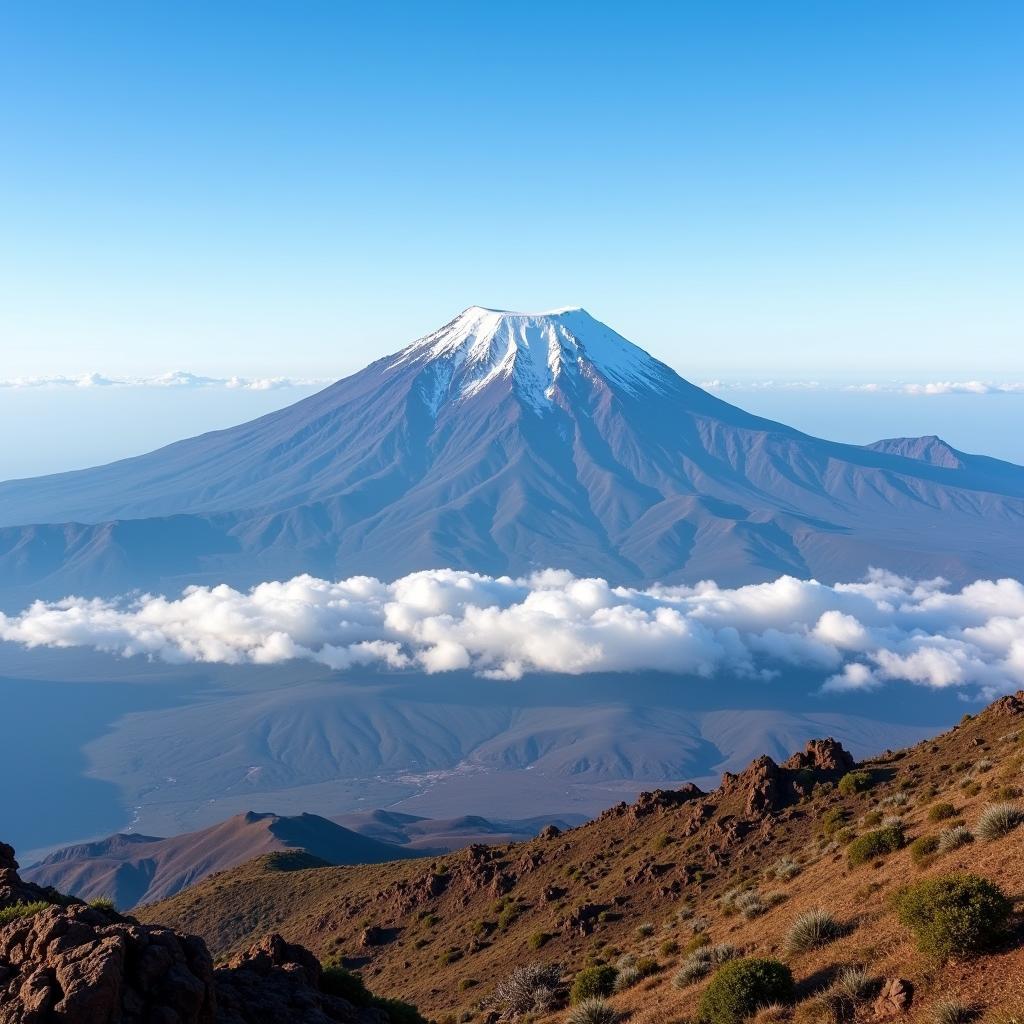African Jungle Dance: An Introduction to Rhythmic Rituals
African jungle dance is more than just energetic movement; it’s a powerful expression of culture, tradition, and spirituality woven into the fabric of life across numerous African communities. For centuries, these dances have served as a vibrant language, communicating joy, sorrow, history, and belief systems passed down through generations. From the pulsating rhythms of West African drumming to the intricate footwork of Central African rituals, African jungle dance offers a captivating glimpse into the heart and soul of a continent.
Unveiling the Mystique: Beyond the Jungle
While the term “jungle dance” sparks curiosity, it’s crucial to understand its limitations. The phrase itself can be misleading, often conjuring up stereotypical imagery that simplifies the diverse landscapes and cultural contexts of these dances. In reality, the term “jungle” doesn’t accurately represent the vast savannas, deserts, mountains, and forests that make up the African continent.
 West African Ceremonial Dance
West African Ceremonial Dance
Instead of a monolithic “jungle dance,” Africa boasts a rich tapestry of dance forms, each unique to its region and ethnic group. Factors like geography, climate, social structure, and spiritual beliefs all play a part in shaping the movements, costumes, and music that characterize these dances.
The Language of Movement: Significance and Symbolism
African dance is deeply rooted in ritual and ceremony, often intertwined with significant life events and cultural practices. It’s a powerful tool for:
- Storytelling: Dances recount myths, legends, and historical events, preserving cultural heritage.
- Social Bonding: Communal dances foster unity and celebrate shared experiences.
- Spiritual Connection: Ritualistic dances connect individuals to ancestral spirits and deities.
- Healing and Transformation: Specific movements are believed to possess healing properties and induce altered states of consciousness.
 Masked Dancers in Ritual
Masked Dancers in Ritual
From initiation ceremonies and harvest festivals to funerals and weddings, African dance plays a vital role in marking life’s milestones. The rhythmic movements, often accompanied by singing, drumming, and chanting, create a trance-like experience that transcends the physical realm.
A Symphony of Sounds and Steps: Exploring Regional Styles
The vastness of Africa translates into a diverse array of dance styles, each with its own unique flavor. Some prominent examples include:
West African Dance: Known for its polyrhythmic drumming, energetic footwork, and vibrant costumes. Examples include:
- Gnawa (Morocco): A spiritual dance tradition that blends African, Islamic, and Berber influences, characterized by trance-inducing music and vibrant attire.
- Yankadi (Guinea): A high-energy, acrobatic dance form performed during celebrations, known for its impressive leaps and fast footwork.
Central African Dance: Characterized by intricate footwork, rhythmic precision, and often involves elaborate headdresses and masks. Examples include:
- Bikutsi (Cameroon): A fast-paced, sensual dance style with origins in the Beti tribe, known for its energetic hip movements.
- Ndombolo (Democratic Republic of Congo): A controversial yet popular dance style known for its suggestive hip movements and energetic style.
East African Dance: Influenced by Arabic and Indian traditions, often featuring flowing movements, elaborate hand gestures, and colorful costumes. Examples include:
- Taarab (Zanzibar): A musical genre and dance style influenced by Arabic, Indian, and African elements, featuring poetic lyrics and elegant movements.
- Mdundiko (Kenya): A high-energy dance performed by the Giriama people, characterized by vigorous shaking of the shoulders and rhythmic stomping.
 East African Dance Celebration
East African Dance Celebration
These are just a few examples of the rich tapestry of African dance. Each region and ethnic group contributes its own unique style, costumes, and musical traditions to this vibrant art form.
Experiencing the Rhythm: Connecting with African Dance
Whether you’re drawn to the pulsating rhythms of West Africa or the intricate footwork of Central African rituals, exploring African dance offers a powerful way to connect with the heart and soul of a continent.
- Take a class: Many studios and cultural centers around the world offer African dance classes for all levels.
- Attend a performance: Seek out performances by African dance companies or attend cultural festivals showcasing traditional dances.
- Research and explore: Dive deeper into the history, symbolism, and cultural significance of different African dance styles.
Through dance, we can transcend cultural barriers and celebrate the shared human experience of rhythm, movement, and expression. So, embrace the beat and let the captivating spirit of African jungle dance move you!

